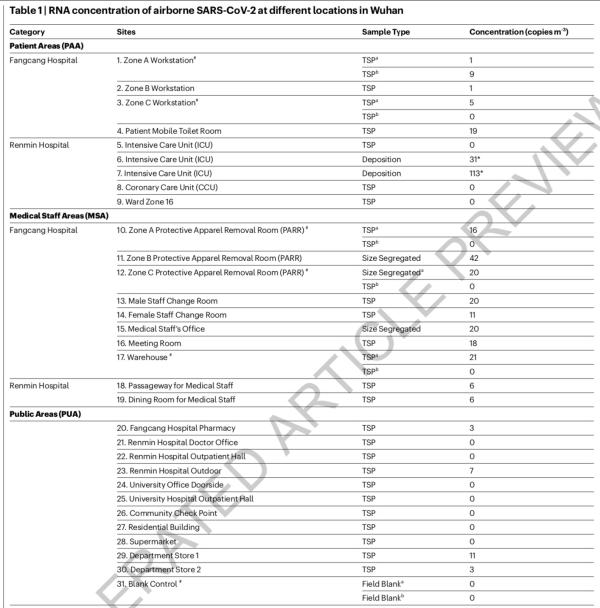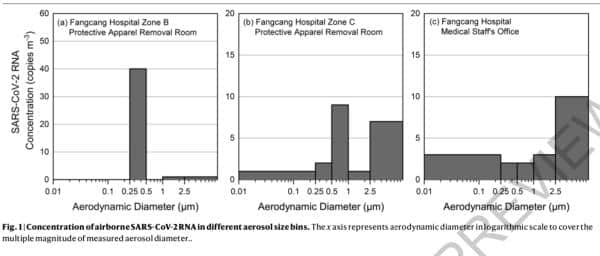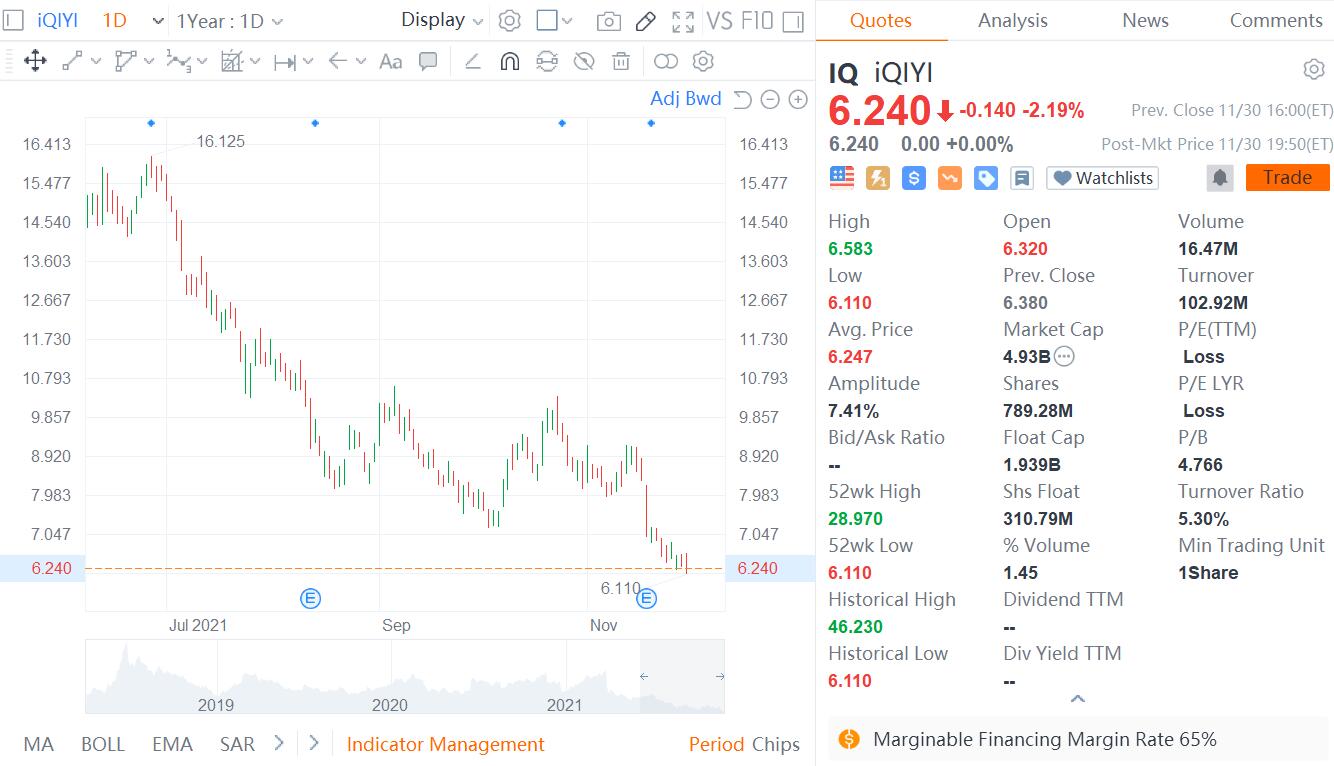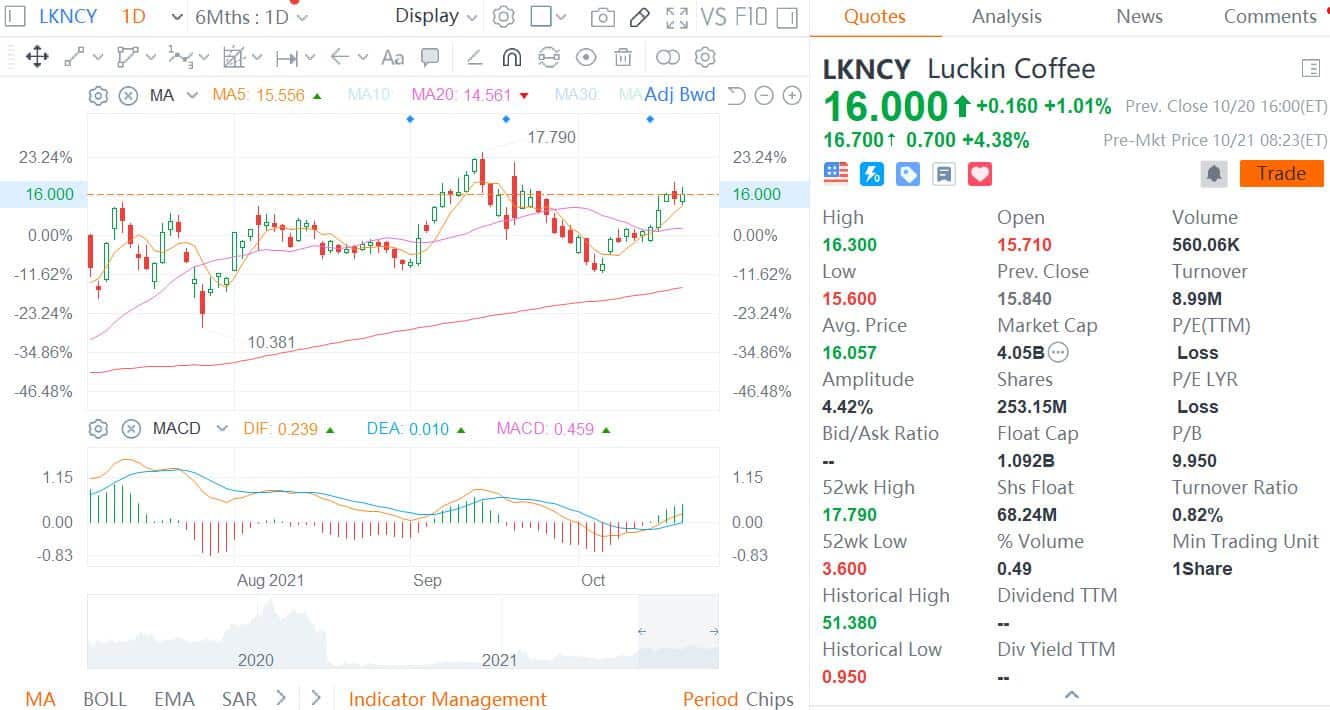
Cutting off the pathway of transmission of the virus is one of the key preventions and control measures for novel coronavirus pneumonia. Droplet and contact transmission have been shown to be the main routes of transmission of the novel coronavirus (SARS-CoV-2), and little is known about its aerosol route of transmission.
On April 27th local time, the top international academic journal Nature published online a study "Aerodynamic analysis of SARS-CoV-2 in two Wuhan hospitals" in the form of "Accelerated Article Preview", a collaborative team from Wuhan University, Hong Kong University of Science and Technology, Shanghai Environmental Monitoring Center, Fudan University and the Chinese University of Hong Kong.
At the peak of the epidemic in Wuhan, the research team entered the representative hospitals and public settings such as the East Hospital Intensive and General Ward of Wuhan University People's Hospital, the ward and toilets of Wuchang Fangcang Hospital, residential areas and supermarkets.
They collected aerosol samples and quantified the aerosol load of the new coronavirus and its aerodynamic characteristics at each sample point using techniques such as the new digital PCR assay for coronavirus developed by the team in advance.
The results of the study showed that the two hospitals and the public environment were generally safe under the strict conditions of prevention and control at the time.
However, the high aerosol viral load in the toilets used by patients suggests that the patient's urinary and fecal flushing process may be an important source of viral aerosols.
A certain amount of aerosol viral load can be detected in the vicinity of supermarkets and hospital building passageways where people congregate, indicating that there is a potential risk of aerosol transmission between the virus carrier and the surrounding population when people gather.
In addition, the team revealed for the first time the aerodynamic characteristics of new coronavirus aerosols by analyzing the viral aerosol load and particle size distribution in ward dust samples and in the area where health care workers removed their protective clothing, and proposed a model of viral aerosol "settlement (clothing/ground)-personnel carry-air lift" transmission.
The authors of the study are Professor Lan Ke, Director of the State Key Laboratory of Virology and Vice President of the Institute of Medical Research, Wuhan University; Professor Kin-fai Ho, The Chinese University of Hong Kong; Professor Kan Haidong, Fudan University and Shanghai Key Laboratory of Atmospheric Particulate Pollution Prevention and Control; Professor Fu Qing-Yan Gao, Shanghai Environmental Monitoring Center; Associate Professor Ning Zhi, Department of Environment and Sustainable Development, Hong Kong University of Science and Technology; and Associate Professor Chen Yu, School of Life Sciences and State Key Laboratory of Virology, Wuhan University.
Yuan Liu, Yu Chen, Ming Guo, and George Ning, Hong Kong University of Science and Technology, State Key Laboratory of Virology, Wuhan University, are co-first authors.
It is worth mentioning that after analyzing and summarizing the first-hand environmental aerosol viral load data during the peak of the above-mentioned epidemic in Wuhan, the research team wrote the study report on February 28, 2020, and submitted it to the Science and Technology Research Team of Hubei Province Epidemic Prevention and Control Command and the relevant hospitals in time, as a reference for government decision-making and scientific basis for hospitals to formulate prevention, control and elimination strategies.
In the paper, it was mentioned that the currently reported modes of transmission of SARS-CoV-2 are: first, inhalation of liquid droplets with the virus; second, contact with confirmed patients; and third, contact with surfaces contaminated with SARS-CoV-2. Furthermore, from clinical observations of confined spaces, the aerosol transmission has been identified as another important pathway.
In fact, many respiratory diseases are airborne, such as tuberculosis, measles, and chickenpox, and a retrospective cohort study in Hong Kong in 2003, following the SARS epidemic, suggested that airborne transmission may play an important role in the spread of the disease.
However, little research has been conducted on the aerodynamic properties and propagation pathways of SARS-CoV-2 in aerosols, partly due to the difficulties of sampling virus-containing aerosols in the real world and the challenges of quantification at low concentrations.
In this study, the team sampled SARS-CoV-2 and its aerosol deposition at 30 sites in two sentinel hospitals and public areas in Wuhan and then quantified the SARS-CoV-2 viral load and kinetic characteristics of aerosol samples from individual sites using a highly sensitive micro drop digital PCR assay (ddPCR) developed earlier in the laboratory.
The two hospitals specialized in treating COVID-19 patients during the outbreak. One of them, the Wuhan University People's Hospital, represents a tertiary hospital that accepts critically ill patients; the other, the Fangcang Hospital in Wuchang, represents a site that accepts isolated lightly ill patients.
According to the accessibility of the different groups, the sampling sites were divided into three main categories: first, patient area (PAA), the area where COVID-19 patients are present.
These include Intensive Care Unit (ICU), Coronary Care Unit (CCU), wards in People's Hospital, toilets and staff work areas in Fangcang Hospital; secondly, Medical Staff Area (MSA), work areas for medical staff in direct contact with patients in both hospitals; and thirdly, Public Area (PUA), places open to the public.
Between February 17 and March 2, the research team collected three types of aerosol samples in two batches at the Wuhan University People's Hospital, Wuhan Fangcang Hospital, and outdoor public areas: first, 30 aerosol samples with total suspended particle count (TSP) with no upper limit to quantify the RNA concentration of SARS-CoV-2 in the aerosol; second, three aerosol samples with fractional particle size to determine the size distribution of airborne SARS-CoV-2; and third, two aerosol deposition samples to determine the deposition rate of airborne SARS-CoV-2.
Fangcang Hospital toilets and paramedics' protective clothing relief room were once neglected
The research team determined the presence of SARS-CoV-2 genetic material RNA by quantitative analysis of aerosol samples.
Novel coronavirus loads (copies/m3 air) at various sampling sites in hospitals and public settings
The results showed that SARS-CoV-2 concentrations in PPA air were generally low or undetectable in most patient areas of Wuhan University People's Hospital, suggesting that negative pressure isolation and high air exchange rates in the ICU, CCU and wards of Wuhan University People's Hospital were effective in limiting airborne transmission of SARS-CoV-2.
The highest concentration of PAA in the patient area is the mobile toilet (19 copies/m3) for patients at Fangcang Hospital, which is a temporary single toilet with no ventilation and an area of about 1 m2.
The research team believes that airborne SARS-CoV-2 in the bathroom may come from the patient's breathing, or from the atomization of aerosols that carry the virus in the patient's feces or urine during use.
It was mentioned in the paper that while the infectiousness of the virus in this study is unclear, its results also correlate with a previous finding that a toilet surface wipe sample used by SARS-CoV-2 patients tested positive.
In the MSA for the medical staff area, the concentrations at the two sampling sites at Wuhan University People's Hospital were lower, at 6 copies/m3, while the concentrations at Fangcang Hospital were higher overall.
In particular, the protective apparatus release chambers (PARRs) in three different areas of the Fangcang hospital had upper limit values for airborne SARS-CoV-2 concentrations ranging from 16-42 copies/m3 in the first sampling.
SARS-CoV-2 aerosol concentrations were very low (below 3 copies/m3) or undetectable at most sites in the PUA outside the hospital common area.
There are two exceptions to the collection site, a crowded area about one meter from the entrance of a department store, which is frequently passed by customers, and a site next to the People's Hospital, where the public, including outpatients, pass.
The research team believes that although both loci were outside the hospital, it is possible that carriers of SARS-CoV-2 in the population caused the aerosols that carried the virus during sampling.
Results from the out-of-hospital collection sites indicate that the overall risk is lower in well-ventilated or open public areas.
But it does emphasize that crowding should be avoided and that early identification, diagnosis, isolation, and treatment of those infected with the virus are also important.
For the SARS-CoV-2 deposition rate study, two aerosol deposition samples tested positive in the intensive care unit (ICU) of Wuhan University People's Hospital with estimated deposition rates of 31 copies/m2h and 113 copies/m2h, respectively.
One sample with a high deposition rate (113 copies/m2h) was placed in an accessible corner 3 m from the bed, and another sample with a lower rate (31 copies/m2h) was placed in another corner, approximately 2 m from the bed, under medical equipment that may have blocked the path of the viral aerosol deposits.
The research team believes that while the sample is small, it does suggest that aerosol deposits carrying the virus may contaminate the surface and subsequently be exposed to susceptible people, leading to infection.
Particle size distribution of novel coronavirus aerosols
It was also mentioned that the SARS-CoV-2 aerosol particle size distribution was mainly in two size ranges, one in the submicron range (0.25-1.0 μm) and one in the ultra micron range (>2.5 μm).
Sub-micron range in the PARR of the Fangcang Hospital's Protective Device Release Room in Sections B and C. And the ultra-micron range was observed in Area C of Fangcang Hospital.
The aerosols that carry the virus in the medical staff office at Fangcang Hospital are mostly in the super micron-scale, but the size distribution of the aerosols is flatter compared to other aerosols.
They speculated that the source of the submicron peak aerosols was the resuspension of aerosols carrying the virus on the surface of protective clothing for health care workers as they were released by the protective clothing.
Submicron aerosols may initially come from direct deposition of patient respiratory droplets, or from the airborne deposition of SARS-CoV-2 into protective clothing.
The submicron SARS-CoV-2 aerosols found in this study have relatively long residence times, suggesting that they may still be infectious during propagation.
Overall, SARS-CoV-2 aerosol concentrations were higher in the medical staff regional MSAs than in the patient regional PAAs in both hospitals during the first sampling of the COVID-19 outbreak peak.
In addition, for the People's Hospital sampling sites, air circulation in the MSA of the medical staff area was designed to be isolated from air circulation in the wards.
In Fangcang Hospital, on the other hand, the unventilated temporary protective device liberation chamber PARR was isolated due to the generally low SARS-CoV-2 aerosol concentration.
And in the second TSP sampling of the regional MSAs of the Fangcang Hospital medical staff, the number of patients was halved at that time and more stringent and comprehensive hygiene measures were implemented.
The second batch of samples showed that all were undetectable, confirming the importance of disinfection in reducing airborne SARS-CoV-2 in high-risk areas.
It is worth noting that this study also has some limitations. The study did not examine whether the SARS-CoV-2 RNA investigated in the study might be infectious, and access to hospitals at the height of the epidemic was limited, limiting the number of samples available.
Nevertheless, this study supports the practice of reducing the risk of infection by completely eliminating potentially viral aerosol-containing hotspot areas, keeping hospitals well ventilated, and avoiding aggregation.
Special Report: Fighting The New Coronavirus











